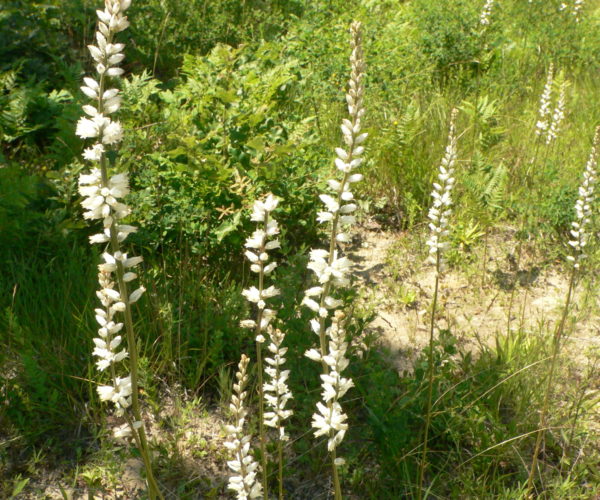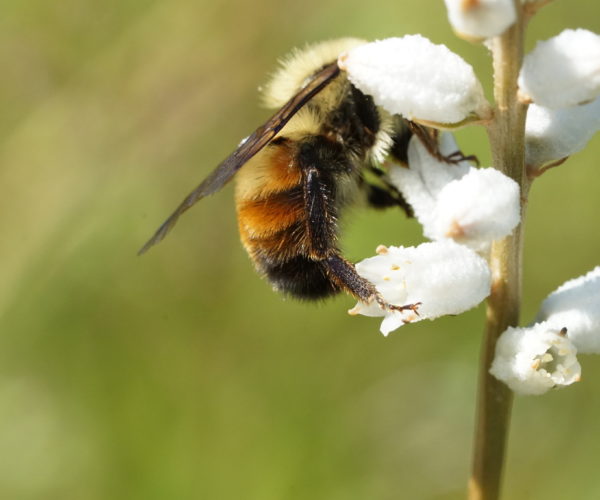One of my favorite plants is white colic-root, Aletris farinosa. A member of the lily family, this wildflower has a basal rosette of leaves and produces a tall, upright spike that supports a column of white, bell-shaped flowers. Understated beauty!
Aletris farinosa has a fairly broad geographical distribution, occurring through much of the eastern United States. But it’s a finicky plant, preferring open habitats with sandy soils. While it’s a reasonably common plant in Massachusetts, the Native Plant Trust reports that it’s nearly extirpated in Maine, rare in Rhode Island, and endangered in New Hampshire. On the Vineyard, it’s locally common, though a look at the distribution of Vineyard records in iNaturalist suggests that this plant is essentially restricted to Correllus State Forest.
While its roots are said to be mildly toxic, colic-root was reportedly used as a medicinal herb by Native Americans. The plant remains in use as an herbal or homeopathic remedy for ailments ranging from muscle cramps to digestive complaints to menstrual pain, though apparently without much evidence of actual effectiveness. Its supposed medical benefits account for its common name, colic-root; the dry, floury texture of the blossoms accounts for the scientific one (“farinosa” meaning “mealy”).
Colic-root is one of the first native perennial plants to begin breaking dormancy on the Vineyard in early spring, with hints of green starting to appear in the middle of the dried-up rosettes from the previous year in early April. It blooms in late June and early July, when relatively few other native plants are in flower in our sandplain habitats. As a result, Aletris is visited by a wide range of pollinators: bees, wasps, flies, even beetles visit the deep calyxes of this plant.
So I always check out Aletris flowers when they’re present; you never know what you’ll find visiting them. But even aside from its role supporting pollinators, white colic-root is a welcome member of the Vineyard’s flora – a distinctive, attractive, and specialized part of our sandplain ecosystem.
Naturalist Matt Pelikan is the director of the Martha’s Vineyard Atlas of Life project at BiodiversityWorks.




